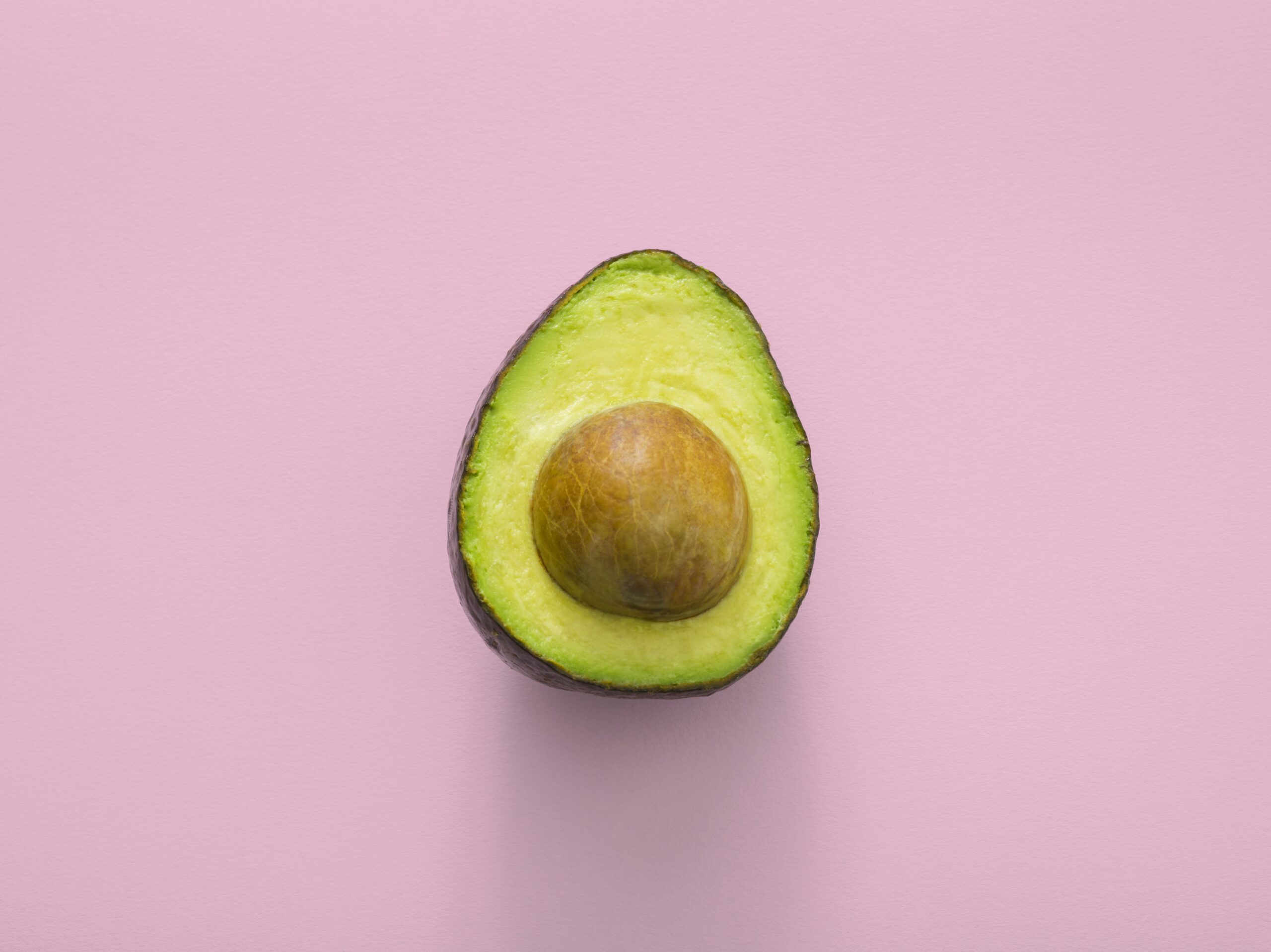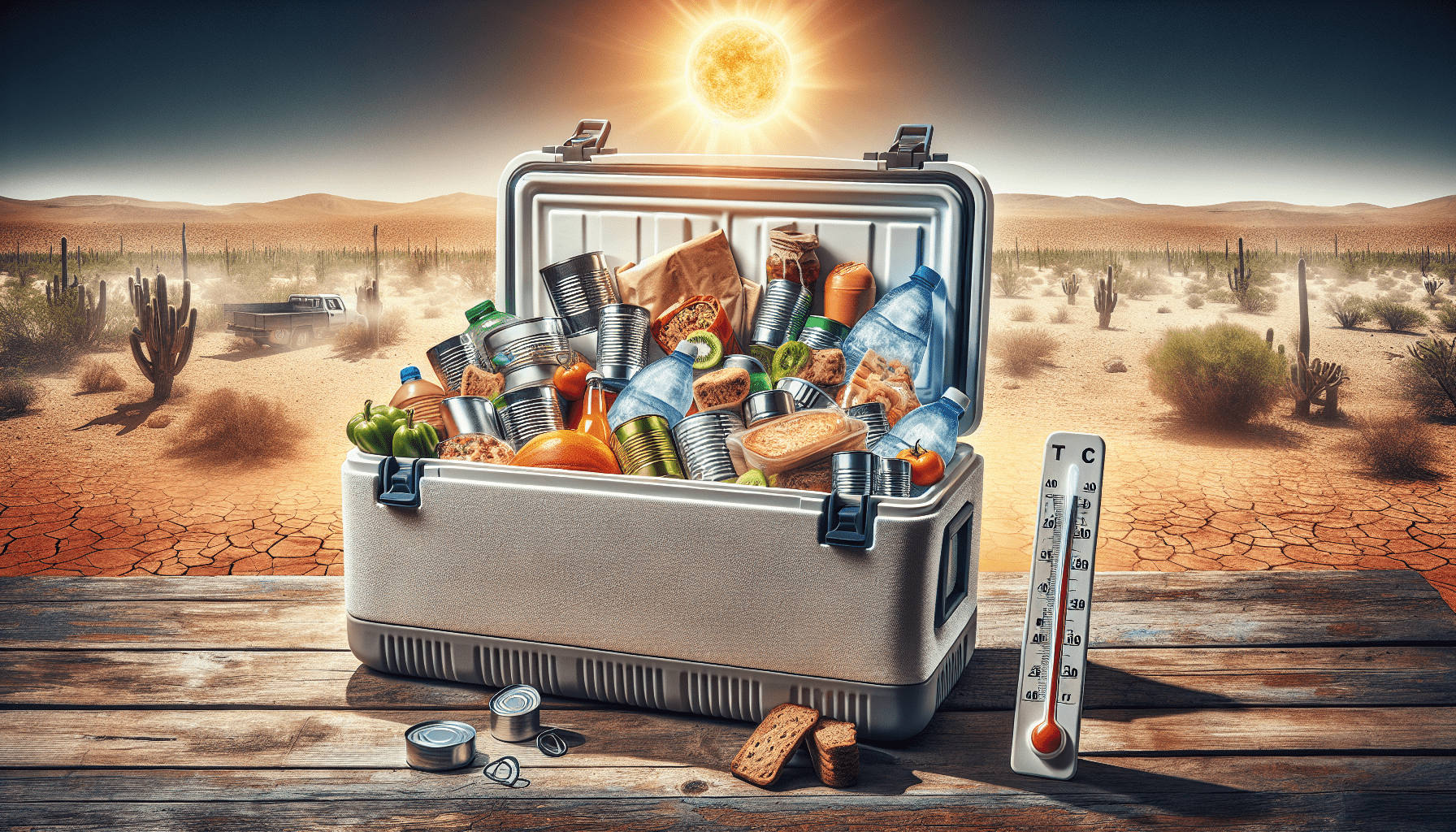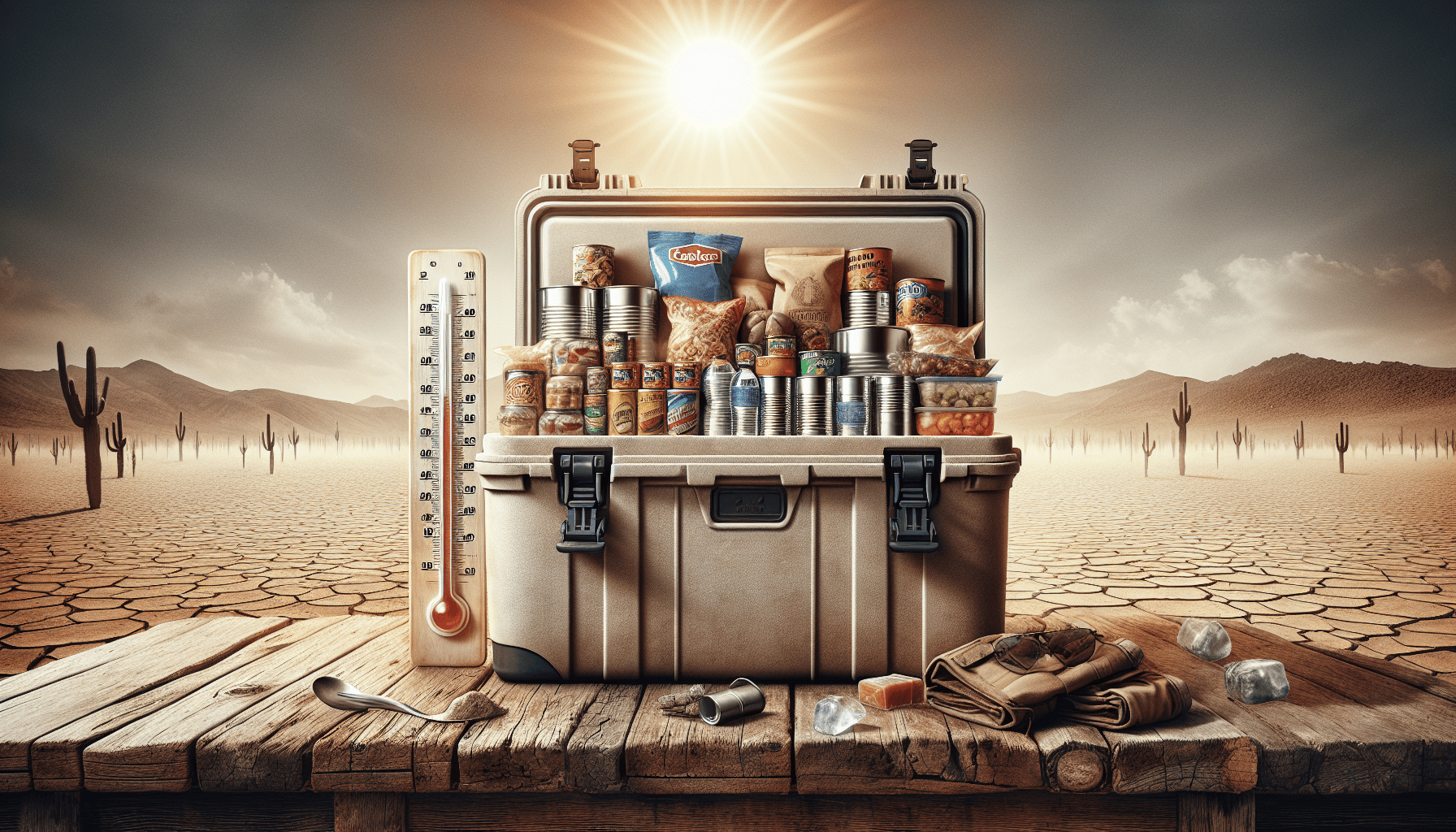Have you ever wondered about the best way to store emergency food in hot climates? It’s not just about throwing some canned goods and dry snacks into your pantry and hoping for the best. Unfortunately, heat can significantly affect the quality and safety of your emergency food supply.
Understanding the Impact of Hot Climates on Emergency Food Storage
Storing food in hot climates presents unique challenges. High temperatures can speed up the deterioration process of many food items, affecting their taste, texture, and nutritional value.
Why Heat is a Concern
Heat accelerates chemical reactions within food, causing it to spoil faster. In temperatures above 75°F (24°C), food can lose its shelf life at an alarming rate. Knowing what happens to your food can help you take steps to mitigate these effects.
Common Issues
- Nutrient Loss: Vitamins and minerals can break down rapidly in high heat.
- Texture Changes: Foods can become soft, mushy, or otherwise unappealing.
- Flavor Deterioration: Organic compounds that provide flavor can break down.
- Food Safety: Bacteria and other pathogens can proliferate faster in warmer conditions.
Selecting the Right Types of Emergency Food
Your first line of defense in hot climates is to choose foods less susceptible to heat damage. Not all food items are created equal when it comes to withstanding warmer temperatures.
Canned Foods
Canned foods are generally well-suited for long-term storage, but they still have some limitations when subjected to high temperatures.
Advantages
- Durable Packaging: Cans are designed to protect their contents from many external factors.
- Longevity: With proper storage, many canned foods can last for years.
Disadvantages
- Quality Degradation: Even canned foods lose nutrient quality and flavor over time when exposed to high temperatures.
- Bulging or Rusting Cans: Heat can cause cans to expand or even rupture over long periods.
Dehydrated and Freeze-Dried Foods
These are excellent choices for hot climates due to their longer shelf life and smaller storage footprint.
Advantages
- Low Moisture Content: Makes it less susceptible to spoilage from heat.
- Lightweight and Compact: Easier to store in large quantities.
Disadvantages
- Requires Water: Need to rehydrate, which could be a drawback in emergency conditions.
- Sensitive Packaging: Must be stored in airtight containers to avoid moisture infiltration, which heat can exacerbate.
High-Energy Foods
Items such as nuts, seeds, and oils are good for an immediate energy boost but have their own storage considerations.
Advantages
- Nutritional Value: High in essential fats and proteins.
- Convenience: Ready to eat, no preparation needed.
Disadvantages
- Spoilage: Can go rancid quickly in hot conditions.
- Storage Requirements: Need to be kept in a cool, dark place to extend shelf life.

Storage Best Practices
Now that you know what types of food are more suitable, let’s dive into how to store them properly.
Find the Coolest Spot
The most critical aspect is to find the coolest location possible for your food storage. This could be a basement, an interior room, or even a custom-built cool storage space.
Use Proper Shelving
Ensure that your storage shelves are sturdy and allow for good air circulation. Metal shelves can be preferable over wood in hot and humid conditions.
Rotate Your Stock
A ‘first in, first out’ system helps to ensure that your oldest food is used first, minimizing waste. Label your items clearly with their purchase and expiration dates for easy rotation.
Utilize Insulation
Adding insulation to your storage area can help to maintain a more stable temperature. Reflective insulation, commonly used in attics, can be adapted to fit your storage needs.
Avoid Direct Sunlight
Sunlight can increase the temperature and directly affect the food. Make sure your storage area is shielded from any direct sunlight.
Use Climate Control if Possible
If feasible, consider adding some form of climate control to your storage area. A small air conditioning unit or a dehumidifier can make a significant difference.
Packaging Considerations
How you package your food can drastically impact its longevity, particularly in hot climates.
Vacuum Sealing
Advantages
- Air Removal: Minimizes oxidation, which is accelerated by heat.
- Compact: Reduces storage space requirements.
Disadvantages
- Cost: Requires initial investment in vacuum sealing equipment.
- Durability: Seals can break over time, especially in fluctuating temperatures.
Mylar Bags with Oxygen Absorbers
Mylar bags are extremely effective for long-term storage and are often used in conjunction with oxygen absorbers.
Advantages
- Barrier Protection: Excellent at keeping out moisture, light, and air.
- Versatile: Can be used for a wide range of foods.
Disadvantages
- Puncture Risk: Can be damaged by sharp objects, compromising the seal.
- Needs Additional Containment: Usually require containers to protect the bags.
Airtight Containers
Using containers such as BPA-free plastic bins or glass jars can add another layer of protection.
Advantages
- Enhanced Protection: Keeps out pests and additional air.
- Stackable: Easier to organize and utilize space efficiently.
Disadvantages
- Cost: More expensive than basic plastic bags.
- Weight: Heavier, especially glass containers.

Emergency Food Inventory Checklist
Having a checklist helps you audit your storage and make sure you have all essentials covered. Here’s a sample inventory to get you started.
| Item | Quantity | Expiry Date | Special Notes |
|---|---|---|---|
| Canned Vegetables | 20 cans | 12/2025 | Ensure no rusting or bulging |
| Dehydrated Fruits | 10 packs | 06/2024 | Store in Mylar bags with absorbers |
| Dried Beans | 15 lbs | 05/2026 | Rotate every 2-3 years |
| Rice | 20 lbs | 07/2025 | Stored in airtight containers |
| Nut Butter | 10 jars | 09/2023 | Keep cool to prevent oil separation |
| Water (Bottled) | 40 gallons | N/A | Rotate every 6 months |
| Protein Bars | 30 bars | 11/2024 | Check periodically for texture |
| Cooking Oil | 5 liters | 08/2023 | Keep in a dark, cool place |
| Instant Noodles | 25 packs | 04/2024 | Check for package integrity |
| Salt | 5 lbs | N/A | Store in a moisture-free area |
Handling Emergencies and Other Considerations
Being prepared also means thinking about practical ways to handle food in an actual emergency situation.
Access and Mobility
Ensure that your emergency food storage is easily accessible. You might need to grab supplies quickly, so avoid cluttered or hard-to-reach storage setups.
Basic Cooking Supplies
In a hot climate, opting for ready-to-eat food is often best, but having some basic cooking supplies can be beneficial.
Involving the Family
Make sure everyone in your household knows where the emergency food is stored and understands the rotation and usage protocols. This creates a cohesive plan and prevents confusion in urgent situations.
Safety First
While preparing, it’s crucial to think about food safety. Consuming spoiled or contaminated food can make a bad situation worse. Always:
- Check expiration dates regularly.
- Monitor the condition of storage containers.
- Be aware of any signs of pest infestation or contamination.

Alternative Storage Solutions
Sometimes keeping food cool in hot climates is difficult, and you may need alternative ideas for storing emergency food.
Root Cellars
Root cellars use the natural insulation properties of the earth to maintain a more consistent and cooler temperature.
Advantages
- Energy-Free Cooling: Does not rely on electricity.
- Versatile: Can store a wide variety of foods.
Disadvantages
- Construction Effort: Requires time and resources to build.
- Limited Use: Not always feasible in areas with high water tables or hard soil.
Underground Storage
You can also consider underground storage lockers or dug-in coolers that can be a simpler alternative to a full root cellar.
Advantages
- Efficiency: Easier to construct than a full root cellar.
- Protection: Offers shielding from extreme weather conditions.
Disadvantages
- Capacity: Limited storage space.
- Accessibility: Can be challenging to access quickly.
Evaporative Cooling
Old-fashioned yet effective, evaporative cooling uses water evaporation to reduce temperatures.
Advantages
- Low-Cost: Requires minimal new materials.
- Eco-Friendly: Uses natural cooling processes.
Disadvantages
- Humidity Management: Must be carefully managed to avoid moisture damage.
- Limited Use: Most effective in low-humidity areas.
Financial Consideration
All these preparations can come at a cost, but consider it an essential investment in your safety and well-being.
Initial Investments
Stocking up on emergency food and necessary storage equipment can be costly upfront. Budgeting for these expenses can help you manage them better.
Long-term Savings
Proper preparation can save you money in the long run by preventing food waste and ensuring you’re not rushing to buy supplies at inflated prices during emergencies.

Planning for the Long Haul
Storing emergency food is not just a one-time task. It requires ongoing effort and adjustments.
Periodic Review
Regularly check the status of your food supplies and storage conditions. Doing this every six months can keep you on top of any changes needed.
Community Effort
Consider connecting with local prepper communities or online forums focused on food storage in hot climates. Sharing tips and resources can be incredibly helpful.
Conclusion
To securely store emergency food in hot climates, you must be proactive and diligent. From selecting the right types of food, understanding proper storage practices, using effective packaging, and planning for quick access, your strategy must be comprehensive. By following these guidelines, not only can you protect your food from the ravages of heat, but you can also ensure that you and your loved ones remain prepared and secure in the face of any emergency.


